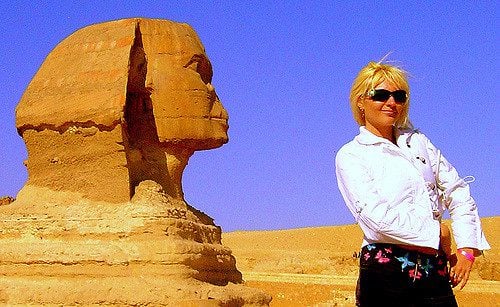Most people know of Egypt’s ancient Great Sphinx monument and its famous missing nose.

What they don’t generally know is why the giant schnozzle of the 61-foot-tall, half-man, half-animal icon of antiquity was vandalized in the first place — along with countless noses of other statues and memorial embodiments in many ancient cultures.
The answer has a lot to do with religion.
The curious case of missing noses
An interesting article in cable news purveyor CNN’s online Style feature gives some insight into why this curious defacement happened so routinely in history. CNN notes that the piece was published in partnership with Artsy, a global platform for discovering and collecting art, in conjunction with an original Artsy article.
Edward Bleiberg, who oversees ancient Egyptian and other art collections at New York’s Brooklyn Museum, told CNN that the question he most frequently encounters from visitors is: Why are the statues’ noses broken? He said he had long assumed that such damage was normal to statuary often thousands of years old.
“But this simple observation led Bleiberg to uncover a widespread pattern of deliberate destruction, which pointed to a complex set of reasons why most works of Egyptian art came to be defaced in the first place,” the CNN article noted.
This interest became the basis of “Striking Power: Iconoclasm in Ancient Egypt,” a traveling Brooklyn Museum exhibition that puts damaged statues and reliefs from the 25th century BC to the 1st century AD side-by-side with intact artifacts.
An ancient habit of vandalism
The exhibition “testifies to ancient Egyptian artifacts’ political and religious functions — and the entrenched culture of iconoclasm that led to their mutilation,” the article explains. The word “iconoclasm” is defined as opposition to traditional religious beliefs and the practice of destroying objects that venerate their deities.
It’s not too dissimilar from the recent controversy over removing Confederate statues of the U.S. Civil War still extant in Southern cities and towns today but which are viewed by many as monuments to racism and slavery. But its not religious, although the Confederate “Lost Cause” in the war still retains a quasi-sacred aura for many Southerners. The CNN article explains that, “‘The consistency of the patterns where damage is found in sculpture suggests that it’s purposeful,” Bleiberg said, citing myriad political, religious, personal and criminal motivations for acts of vandalism. Discerning the difference between accidental damage and deliberate vandalism came down to recognizing such patterns. A protruding nose on a three-dimensional statue is easily broken, he conceded, but the plot thickens when flat reliefs also sport smashed noses.”
It turns out that ancient Egyptians ascribed significant powers to artistic images of human beings or anthropomorphized deities or pharaohs (who were generally considered divine), believing, for example, that a divine essence could inhabit the statue of a deity. The worldview also held that a portion of a mortal being’s soul could be contained within an artistic representation of that person.
Therefore, such statuary vandalism sought to emasculate the icon or, as Bleiberg worded it, to “deactivate an image’s strength.”
The nose knows
But why destroy a statue’s nose? Because if you believe that such a seemingly inanimate object in fact is somehow animated, it needs to breathe, right?
Statues and reliefs were once viewed as “a meeting point between the supernatural and this world,” and a conduit for the transmission of divine power to human beings. So, vandalism of icons were believed to disrupt this exchange.
“The damaged part of the body is no longer able to do its job,” Bleiberg explained.
Without a nose, the article notes, the statue-spirit “ceases to breathe, so that the vandal is effectively ‘killing’ it.”
It’s a fascinating hypothesis to explains the legions of noseless statues in the world, and it is even borne out in the tale about what purportedly happened to the nose of the Sphinx in Giza.
The Smithsonian Journeys e-zine suggests that it wasn’t a cannon of Napoleon Bonaparte’s army that blew off the Sphinx’s nose early in the 18th century but a 14th century Sufi Muslim leader, Muhammad Sa’imal-Dar, who was annoyed that Egyptian peasants were worshipping the Sphinx as a counterweight to floods.
“Outraged by the blatant show of devotion,” according to the e-zine article, referencing writings of Egyptian Arab historian al-Maqrizi, “Sa’im al-Dahr destroyed the nose and was later executed for vandalism. Whether this is absolute fact is still debatable.”
But the story certainly honors the long history of iconoclasm.
Please sign up (top right) to receive new Godzooks posts via email, Facebook or Twitter
See full Kirkus review, HERE. Find “3,001 Arabian Days” on Amazon, HERE
















